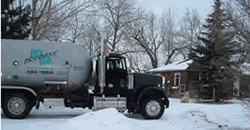|
R
E S I D EN T I A L
Residential
People
trust and rely on propane for heating and cooling their homes,
heating water, cooking, refrigeration, drying clothes, barbecuing,
interior and exterior lighting and fueling their gas fireplaces.
Propane burns cleanly, so it's environmentally friendly. When used as a home
energy source, propane gas offers homeowners reliability, cleanliness, improved
performance and, on average, costs significantly less than electricity.
Homes
and businesses use about one-quarter of the propane consumed.
Propane is used mostly in homes in rural areas that do not
have natural gas service, as well as in manufactured (mobile)
homes. Nearly 49 million households use propane to meet some
of their energy needs. Nearly 6 million households use propane
as their main heating source.
Propane
is also used in homes for air conditioning, heating water,
cooking and refrigerating foods, drying clothes, lighting,
and fueling fireplaces. Homes that use propane as a main
energy source usually have a large propane tank outside of
the house that stores propane under pressure as a liquid.
BP
Propane supplies propane to residences in trucks, filling
the tanks several times a year as needed. The average residential
propane tank holds between 500 and 1,000 gallons of liquid
fuel. Millions of backyard cooks use propane-powered gas
grills for cooking. Recreational vehicles usually have propane-fueled
appliances, giving them a portable source of energy for cooking,
hot water, and refrigeration. |


